Dear Readers,
I don’t claim to be an expert. I don’t claim to be a great investor. And I most certainly don’t claim that my opinion is absolute.
But what I can say with certainty is that I am very diligent in my search for the truth. And that begins by listening to every side of the story, whether I agree with it or not.
The ability to view things from multiple perspectives is not an easy attribute to learn. But once you do, it can often lead to great rewards.
I say this because most people – especially retail investors – have a hard time dealing with scenarios that may sound too negative, or too conspiracy-like; that is until it becomes reality.
The mortgage bubble in 2008 is a prime example.
My point is this: don’t let what you can’t see tomorrow, fool you into making poor investment decisions today.
Against the Grain
When I wrote about gold’s bottom last year during one of the worst weeks for gold and gold stocks, there were many who thought I was nuts.
Via my Letter on July 26, 2015:
“…This week was one of the worst weeks for gold, as a bear raid forced its price down to the lowest level in five years. It sent the benchmark Philadelphia Stock Exchange Gold and Silver Index of the largest producers to its lowest since 2001.
But shortly after the last time we witnessed panic selling like this, the leading gold-stock index more than quadrupled in value, and many of the smaller gold miners with strong fundamentals climbed even higher.
Gold stocks are now trading at fundamentally ridiculous price levels today and have never been cheaper relative to the gold price itself. This is an anomaly that simply isn’t sustainable.
Which is why I believe that gold’s actions this week may have just set us up for an incredible opportunity. It couldn’t have been timed better.”
When I wrote that, there was practically no interest in gold stocks. In fact, the GDX Gold Miners Index fell to a fresh low the next week.
With that call, I once again had analysts and bankers tell me I was wrong. But if they waited just a little longer…
Take a look at the GDX and the GDXJ chart today.
Via Bloomberg:
When I wrote that Letter, the gold producer I introduced at the time was trading at C$0.82.
Today, that Company is up over 375% at nearly $4.
Then, in November, I introduced another gold stock when it was trading at C$0.34.
Again, some experts said I was wrong and that my timing was off – especially since the Company was already trading near a 52-week high.
But their shortsightedness led them to miss out on yet another opportunity.
Today, that Company is up over 100% at nearly $0.70.
And it’s not just within the gold sector.
In March this year, I wrote:
“Silver is still trading at a low of US$15ish per ounce, but I suspect we could see this price move to the upside soon.”
I was told by some that my call was wrong, as there was no interest in silver, and gold would have to move significantly higher for silver to shine.
Within the next few weeks, silver climbed to a new 52-week high of $17.86. Today, it trades at just over US$17/ounce, and now those experts who said I was wrong are now jumping on the bandwagon.
But that’s not all.
Media outlets have poured on their anti-oil sentiments, talking about the demise of oil due to oversupply and electric cars.
So it was no surprise when I told readers that I am looking to go long oil on Feb 7, 2016, many experts – mainly newer readers of this Letter – thought I was nuts.
From my Feb 7, 2016 Letter:
“I am looking to go long oil.”
But take a look at the chart since I wrote that Letter, via Bloomberg:
Sure, luck may have been on my side regarding many of those calls. But the important thing to consider is the amount of research and diligence that took place before writing those Letters.
This same diligence can be applied to numerous situations – not just investment-related topics.
When I shared my thoughts on the truth about Ebola and how it would soon be forgotten, many were appalled:
“… With no cure and very high death rate, it’s not something to be taken lightly, even in these early stages of the epidemic. You’re really off base on this one.”
“…The fact of the matter is that the disease spreads extremely easily. When you can isolate them and give them the finest care, it’s curable. If the numbers get away on you, there simply won’t be enough resources to deal with the epidemic. Shame it takes a moron to explain it to you.”
Where are the stories on Ebola now?
And just a few months ago, when I wrote:
“I am not yet saying (Trump) will become President. But I do believe, as I have from the beginning, that he has a strong chance.”
Again, I was mocked for saying this over the last year. In fact, you can see some of the comments posted on that Letter that suggest I am crazy.
Today, Donald Trump is the presumptive Republican nominee for president.
Moreover, Clinton now only leads Trump by a measly 2 points nationwide for President.
My intention today isn’t to boast about the timing of my calls and predictions.
My intention is for you to take what I write today very seriously.
Today, I want to present some facts as to why I believe the bull market run for the US market may finally be over – as I suggested last year.
The Underlying Factors
In 2014, I wrote a series of Letters exposing the rise of the stock market: corporate buybacks as a result of the Fed.
For example, from my Letter in July 2014:
“…While many financial journalists continue to talk about bubbles (one which I agree is happening), it may not be ready to pop just yet.
… Since Fed policy dictates that it cannot directly buy stocks, the Fed has found other ways to encourage people to take risks.
I have talked about these strategies many times before.
One of these strategies is to force banks to lend.
The problem, however, is that it’s difficult for banks to lend to unqualified borrowers. And since the majority of Americans have been terribly affected by the economic crisis, many of them don’t meet the requirements for borrowing.
With so much stimulus, where has all the money gone?
To the people who meet the requirements: big corporations with cash.
Remember a while back when I talked about the record amount of cash hoarding by big corporations and how they weren’t using it for capital investments (hiring, infrastructure, etc.) because the economy didn’t warrant such actions?
So what do you do when you have so much cash, but nowhere to deploy it?
Invest in the stock market…simple!
Since spending didn’t make sense for these corporations, as the economy truly didn’t warrant further hiring or sales, these companies decided to buy a record amount of their own stock with their cash pile.
When a company issues a share buyback, the amount of outstanding shares in a company decreases. This leads to a higher Earnings Per Share (EPS), which makes the stock look much more attractive. This, of course, leads to higher share prices.
While this is great for shareholders, its bad for the economy as the cash is no longer put to use to hire new employees or grow the company.
Share buybacks continue at a record pace and I expect billions of dollars in transactions over the next few months alone.”
Since then, corporate buybacks have soared as predicted.
According to legendary investor Stanley Druckenmiller in his latest presentation at the Sohn Investment Conference:
“Last year, buybacks and M&A were $2T. All R&D and office equipment spending was $1.8T. And the reckless behavior has grown in a non-linear fashion after 8 years of free money. In 2012, buybacks and M&A were $1.25T while all R&D and office equipment spending was $1.55T. As valuations rose since then, R&D and office equipment grew by only $250b, but financial engineering grew $750b, or 3x this!”
Why the Market Has Topped
Over the past years, companies have been forced to become more efficient through cost-cutting measures, store closures, and layoffs. Combined with share buybacks, it has led to higher profits at the expense of corporate growth through infrastructure investments. It has also led to higher stock prices.
But eventually, these cost-cutting measures, share buybacks, and sales growth from corporations will stall.
In fact, numerous sources have already proven that the decline of corporate progress is already here.
Last year, US retail sales were the weakest since 2009.
And they’re not getting any better.
Kohl’s Corp. just posted a massive 87% drop in profit in the latest quarter.
JC Penney, Macy’s, and Nordstrom all reported disappointing results and every one of them had poor sales.
Intel just announced it’s slashing 12,000 jobs, or 11 per cent of its workforce, after lower-than-expected sales for the first quarter.
Even powerhouse Apple just posted its first-ever decline in iPhone sales and its first revenue drop in 13 years.
Overall, corporate earnings have declined for four straight quarters.
The last time this occurred was during the last financial crisis.
Autos & parts inventories-to-sales ratios just climbed from 2.18x to 2.30x.
The only time it was higher was during the last financial crisis.
According to the latest data from the U.S. Census Bureau, the overall inventory-to-sales ratio among U.S. businesses reached 1.41 at the end of February.
That’s the highest level since the middle of 2009, during the last financial crisis.
This number was even higher amongst retailers.
That’s not all.
CONTENT LOCKED
Enter your email to get instant access (it's free!)
to this special content post:
*By entering your email, you are agreeing to our privacy policy and terms of use. You will also receive a free weekly subscription to the Equedia Letter, one of Canada's largest private investment newsletters. Don't worry, it's free and you can cancel at anytime.
Commercial bankruptcy filings totaled 3,482 in April, up 32 percent from the same month a year ago. That’s the sixth month in a row for year-over-year increases in business bankruptcy filings.
According to data from the American Bankruptcy Institute, 680 commercial Chapter 11 petitions were filed in April, up 67 percent from the same month a year ago.
The last time we saw such a big spike was just before the last financial crisis.
It’s no wonder why the “smart money” is getting out of stocks.
Smart Money Moves Out
Stock funds in the United States have now posted outflows in 15 of 19 weeks and investors are pulling money from global equity funds at their fastest pace since 2011.
Via FT:
“…Redemptions from stock funds have reached nearly $90bn so far this year.
… The S&P 500, Euro Stoxx 600 and Nikkei have all slid since May began, and $7.4bn was withdrawn from equities in the last week alone, according to data provider EPFR.
… The withdrawals have put equities “firmly” on track for their biggest year of redemptions since 2011, EPFR said.”
And via Reuters:
“Lackluster U.S. corporate results spurred investors to pull $11.2 billion from U.S.-based stock funds in the past week, the largest seven-day outflow since January, Lipper said on Thursday.
…Investors preferred international stocks to U.S. shares. U.S.-focused funds posted $11.8 billion in outflows.
…Investors pulled back from both European and Japan stocks for the 14th straight week.
…The $7.8 billion of outflows in April from exchange-traded products that hold Japanese stocks was the largest withdrawal for those funds ever, said Paul Young, a spokesman for fund management company BlackRock Inc.”
Of course, long-time readers of this letter have already known this was coming.
Since 2008, I have said that we should be investing in North American equities due to a bull market that would erupt as a result of monetary policies.
But last year, after seven straight years of strong gains, I said that we should be very careful of 2016.
From September 2015:
“…The market could still hold up after September, and still end up in the green this year. But I certainly won’t say that about 2016.”
I then further alluded to the fact that sales in stocks would be used to fuel the amount of debt required to keep the world moving.
Today, we’re once again seeing this shift from stocks into bonds.
Via FT:
“Bond funds and money market accounts benefited from the shift out of stocks in the past week. Global bond funds counted $3.5bn of fresh capital in the five trading days to Wednesday, the 11th week of inflows in the past 12, according to EPFR.
Money market accounts – often considered a proxy for cash – received $5.1bn of inflows in the past week, the third consecutive week of additions, according to Lipper.
… Global bond funds have recorded $59bn of inflows since the year began, surpassing the $56bn haul in 2015.”
And I think it’s just the beginning.
The writing is on the wall: stocks are expensive.
If the stock market is a forward-looking indicator of our overall economy, and corporate profits and growth are stalling, surely the stock market’s best days should soon be over.
According to Andrew Lapthorne, head of quantitative strategy at Societe Generale:
“Global earnings are now 14% off the peak set in August 2014 and back to where they stood five years ago. Equity prices, on the other hand, are 25% higher.”
In other words, anyone buying stocks today is likely paying a massive premium.
Of course, this sentiment can easily be changed if central banks prolong the bull market through monetary intervention – a scenario that wouldn’t surprise me.
But if we don’t know what central banks are going to do, and the markets are top heavy, what should we do?
The Insurance Policy
If investors flee stocks, it means their risk profile is changing and they’re looking for safer returns. As I just mentioned, one of these shifts is from stocks to bonds.
But there is another asset class that investors will shift to which may be even safer than bonds, and that’s gold.
In fact, we’re already seeing some of the world’s smartest investors shift from stocks to gold.
Stanley Druckenmiller has already begun to make this shift, betting $300 million on gold, and making it his largest currency allocation.
For those who don’t know Druckenmiller, he is chairman and CEO of the Duquesne Family Office. His hedge fund track record is unparalleled, generating annualized returns of 30 percent during his investment career of over 25 years.
According to his investors, the Duquesne fund never had a down year.
He’s not the only one whose shifted to gold.
Via Bloomberg:
“Billionaire hedge fund manager Paul Singer said that gold’s best quarter in 30 years is probably just the beginning of a rebound as global investors — including Stan Druckenmiller — weigh the ramifications of unprecedented monetary easing on inflation.
… “It makes a great deal of sense to own gold. Other investors may be finally starting to agree,” Singer wrote in an April 28 letter to clients. “Investors have increasingly started processing the fact that the world’s central bankers are completely focused on debasing their currencies.”
There is a ground swell brewing in this shift to gold and I believe that the economic stall and corporate outlook, combined with the actions that may be required by central banks to keep the world moving, all lead to higher gold prices.
When growth is lacking, governments resort to doing whatever they can to paint a pretty picture; no leader wants to be known for the one who led his economy astray.
This mentality will likely lead to a further exuberance of monetary and fiscal policies, making gold one of the most attractive asset classes against a wave of currency manipulation.
For years, I have said that stocks would move higher based on the policies of the Fed and other central banks.
But with so much monetary exhaustion, how much more can the Fed or other central banks do to maintain the forward progress of the market?
Every additional dollar of added stimulus is returning less than the dollar before it. Corporate growth has stalled, yet valuations for stocks remain high. How big would the next financial injection have to be in order to maintain growth?
Aside from blatant manipulation (and that’s a possibility), there just isn’t a scenario where I can see gold falling much further, but many scenarios that suggest it will climb higher.
Even if gold maintains its current price, there will be many gold stocks that will do very well – especially the producers with low all-in sustaining costs.
But if gold moves higher – which I believe it will – a lot of money will be made in gold stocks.
And that’s why I am looking to add more.
Seek the Truth,
Ivan Lo



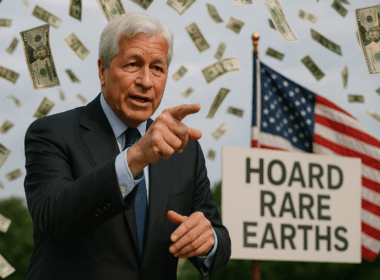



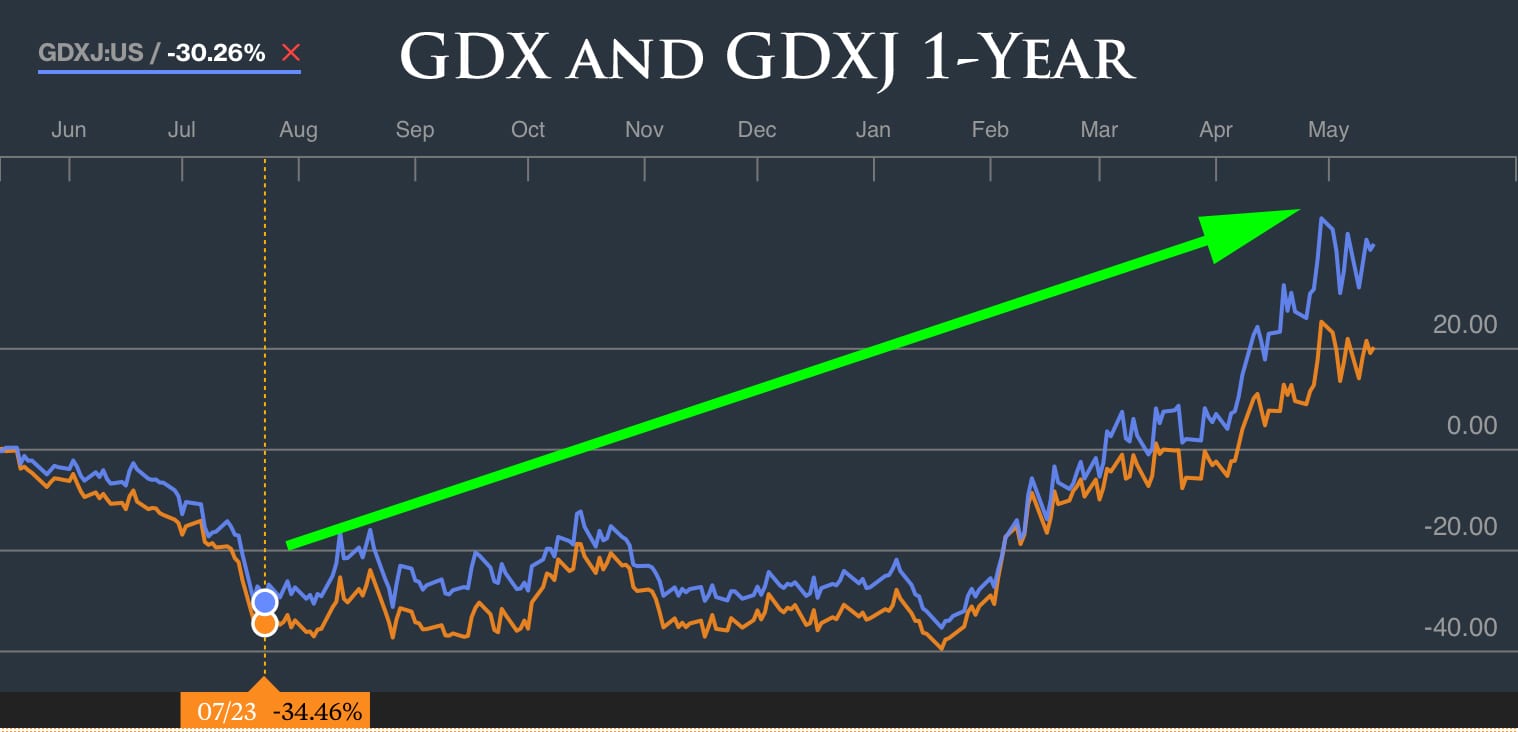
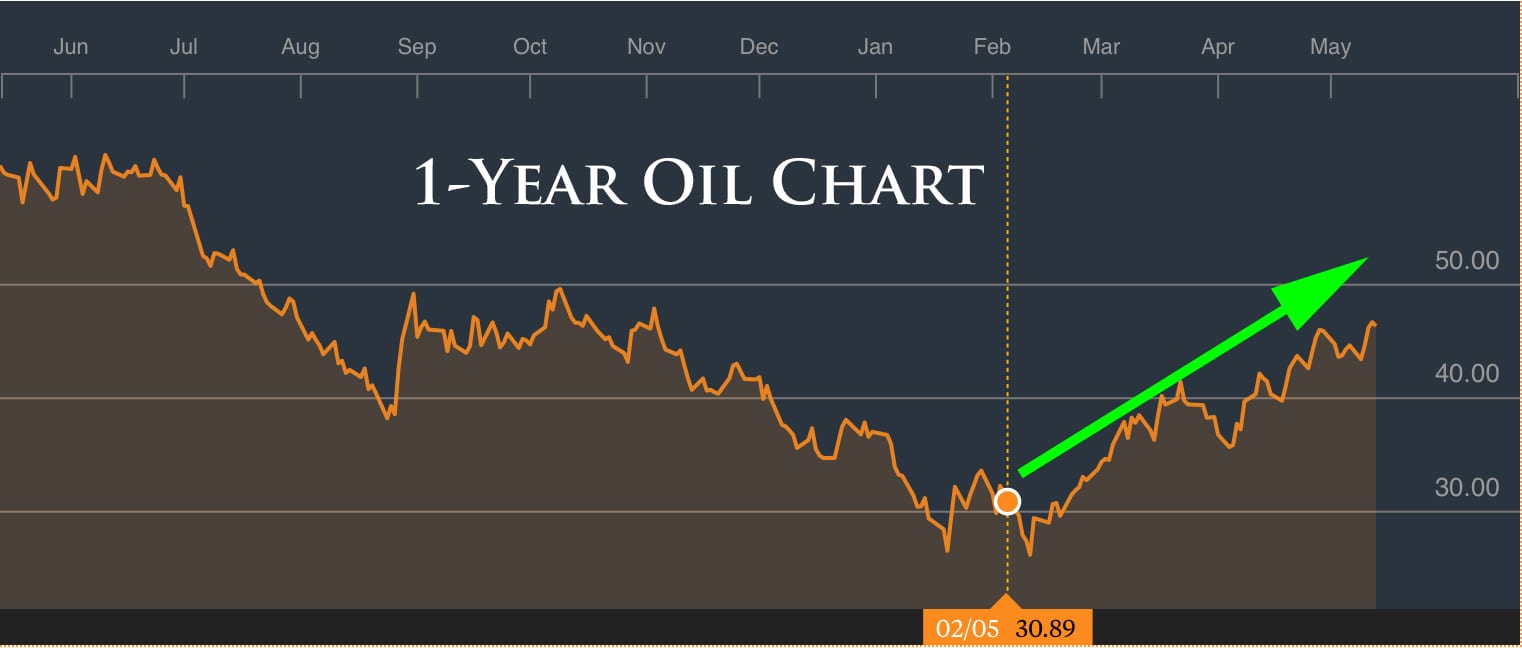
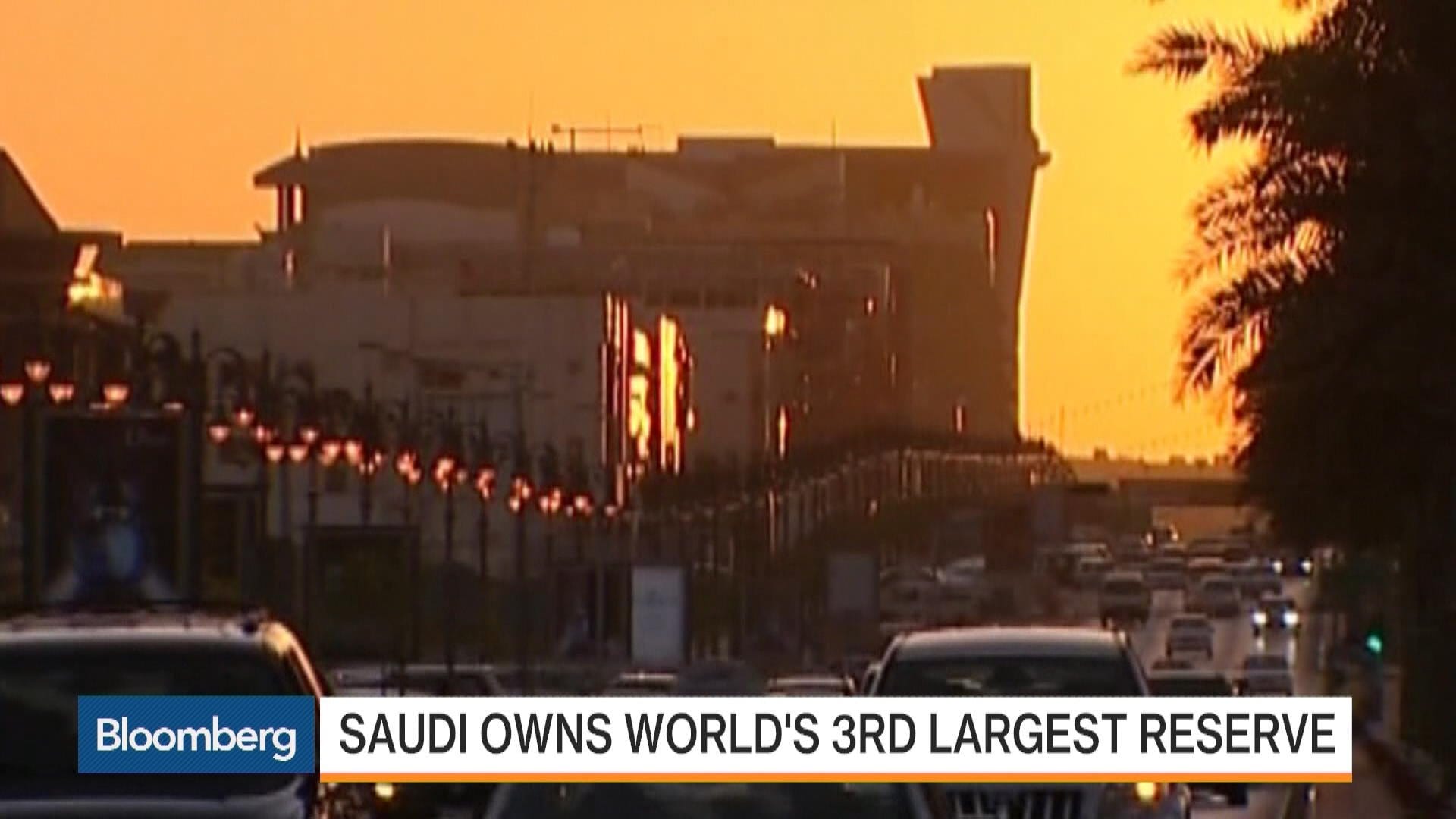


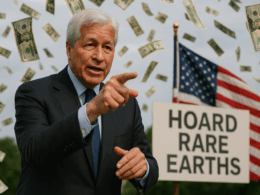


I believe both Integra Gold and Newmarket Gold were your recos. Thanks!
I agree the mainstream conventional market has topped. because Currency printing (dollars, Euro’s and YEN) by the key central banks has only benefitted the top 1%, it has not for the most part trickled down to the average worker who is up to his eye balls in DEBT.
Thank you for all your insights. Since following you I now believe I will have a retirement.
You have never steered me wrong, thank you very much.
Ivan, I followed your suggestions on the gold stocks and ETF’s.
Thank you. Nice move so far.
And I certainly agree with you about Donald Trump as the next POTUS.
It seems that people want to believe other than what the indications are.
They do not want to see the truth. Trump is leading because he is offering a strong indication that he is going to do more than the previous bunches never did do despite their promises. I’ll bet with you that Trump is the Man!
Thank you for you rvery valid opinion,what you explain in your letter makes a lot of sense to me,I am going to start selling stocks and buying GDX and the juniors holding MXN, 10,000 shares at 0.133 a doble now for me,and I am not selling.
Thank you again MR.LO.On the charts you do not show the symbols and I do not keep copy of your letters,even as good as they are,will start noow,
Regards,
Fred
I agree that all the deadwood (bankruptcies) continues to clear the way as global growth continues to stagnate and the SP500 trading within that 1850-2100 range since 2014. If you have been playing those Bollinger bands you have done very well. Nonetheless, it is time to be in Gold, precious metals, utilities and defensive staple names until this dust has settled and economic data and the oil picture gets better in the 2nd half. So some inverse ETF’s would work well too, but am not expecting a recession or bear market any time soon. If interest rates go up, all bets are off.
I bought New market gold last year. Thank you.
Thanks Ivan.
I started buying 10000 shares at $1.46 and reinvested my buying power into new shares.My holdings are now 41000 shares and I am waiting for the stock to break through 4 dollar mark. Look what happened to RIC. NMI looks way better to me.
Edward: Almost hit the $4 mark today!
We get a lot of emails from loyal readers who have made a lot of money on some of the ideas from the Equedia Letter. But I must say, I take no credit. All of the risks are taken by you guys – of course, the rewards are your as well.
Your strategy to go from 10,000 shares to 41,000 with the rising tide is one that not many can stomach, but on this one, it clearly paid off!
Thanks again for the comment here – it’s great to hear success stories, but even greater to hear a unique story such as yours.
Watching with great interest